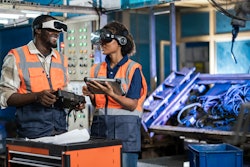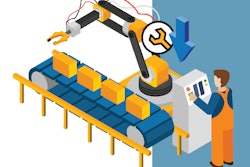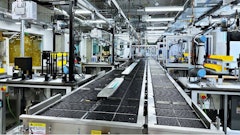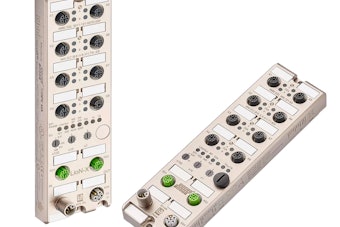All brand owners know whether their products are vulnerable to the spoiling effects of oxygen. But not all know how to systematically manage that vulnerability with packaging. Brand owners who include the oxygen transmission rate (OTR) in their decision-making need a solid understanding of its capabilities and its limitations.
OTR measures the steady-state diffusion of oxygen through a permeable material. Diffusion occurs at different rates at different conditions of temperature and relative humidity (RH). That’s why testing is done under standardized conditions and the results expressed in standardized terms, for example cc/100 in2 /24 hours (or a metric version).
This article is not about packaging that has undergone a change to its internal oxygen content. Exempted, therefore, is modified-atmosphere packaging (MAP), which purges oxygen and replaces it with an inert gas. Also exempted is vacuum packaging, which removes oxygen, causing the packaging film to tighten to the contours of the product. Those exemptions notwithstanding, the packaging still must provide adequate barrier.
The term, “barrier flexible packaging,” clouds the fact that all flexible packaging provides barrier, some just better than others. An OTR is useful for comparing options under identical ambient conditions. The OTR, conversely, might not correlate with the ambient conditions that the packaged product will encounter throughout its supply chain. Standardized test conditions of 73°F and 0% RH, for example, might not be consistently encountered throughout a regional supply chain, and even less so throughout a national one.
An OTR less-than-or-equal-to 1 cc/100 in2 /24 hours is considered high barrier. Its relevance should be evaluated by asking, “Is that much barrier needed? What structures can provide it? What is the cost? What are the involved technologies? And how can that barrier be leveraged for a competitive advantage?”
OTR is affected by various factors. One is the thickness of the structure, especially for a monolayer film. There are practical limits—costs and machinability among them—as to how thick a film should be. Thickness also is a limiting factor for multilayer structures, particularly laminations and coextrusions. There, the barrier layer typically is the most expensive, so there is a cost incentive to use it in the thinnest layer suitable for the application. The same frugality should extend to materials used as barrier coatings.
OTR also is affected by the chemical composition of a film. A case-in-point is the copolymer EVOH (ethylene vinyl alcohol). Higher ethylene ratios yield better barrier and improved processing. On a different but related note, recycled polymers are not as chemically homogenous as virgin polymers. The respective OTRs will be different, in favor of virgin, even if not by much.
In the United States, laboratories cite ASTM D3985 Standard Test Method for Oxygen Transmission Rate. Some film suppliers also provide testing, but laboratories can claim to be disinterested parties. That said, laboratories are known to be less objective about their testing equipment. Whether evaluating a laboratory or a film supplier, a brand owner should be wary of a party who promotes a standard uncritically. Wariness also is warranted if a party tries to dissuade a brand owner from modifying a test so that results correlate better with anticipated conditions.
In addition to oxygen, barrier might have to be provided against moisture and light. A generalization is that the more types of barrier needed, the more the structure is likely to incorporate foil or a metallized substrate. If, however, light is not a concern and there is a marketing advantage to a clear (transparent) package, consideration can be given to structures that incorporate PVDC (polyvinylidene chloride).
There's data that compare the OTRs of the various films, at the same gauge, from poorest to best. There’s no need to start from square-one in identifying plausible candidates. But no matter how reliable the data and how application-suited the barrier flexible packaging, it can be all for naught if the brand owner’s facility lacks certain quality-assurance (QA) measures.
One such QA measure concerns incoming supplies, making sure that what’s received meets specification. A manufacturer of prosthetics (e.g., knee replacements) failed in that regard. The oxygen-sensitive polymer component of those devices was supposed to be protected by the packaging. For years, the manufacturer received packaging that was missing its oxygen barrier. This was discovered after implanted prosthetics prematurely degraded, necessitating replacement surgeries. It triggered a bevy of lawsuits, still being litigated at the publication date of this article.
Another QA concern is the integrity of the sealing operations. Barrier flexible packaging can be perfect in terms of its construction yet be sabotaged by poor seals. Entrance of oxygen through a poor seal is easier than diffusion. The sealing station needs to remain calibrated at the correct combination of temperature, pressure, and dwell time.
In conclusion, achieving flexible packaging that has the requisite oxygen barrier is a multi-faceted undertaking; however, the correct approach clears the air and lets the brand-owner breath easier.
Sterling Anthony, CPP, consults in packaging, marketing, logistics, and human-factors. A former faculty member at the Michigan State University School of Packaging, his contact info is:100 Renaissance Center, Box-176, Detroit, MI 48243; 313/531-1875; [email protected]















